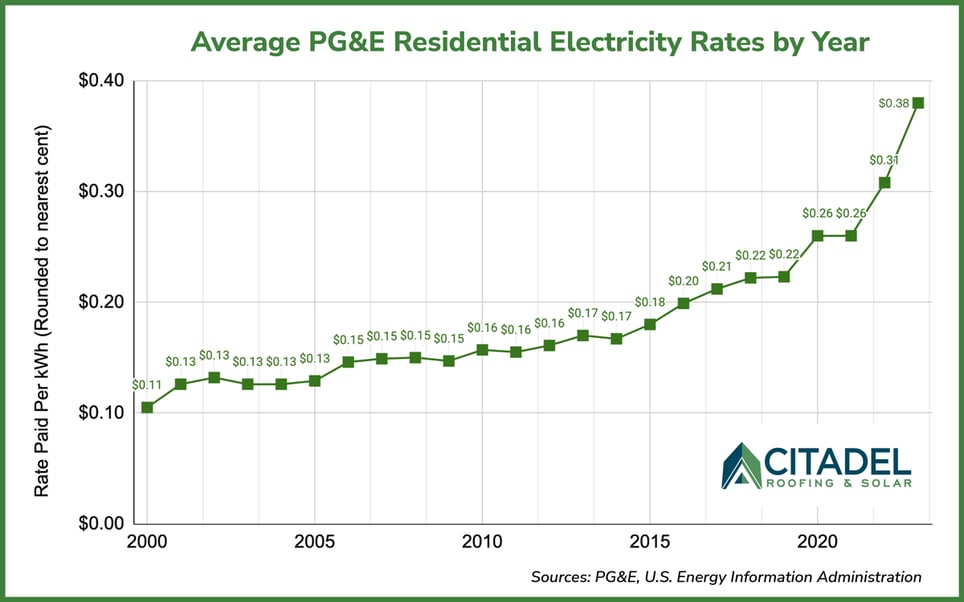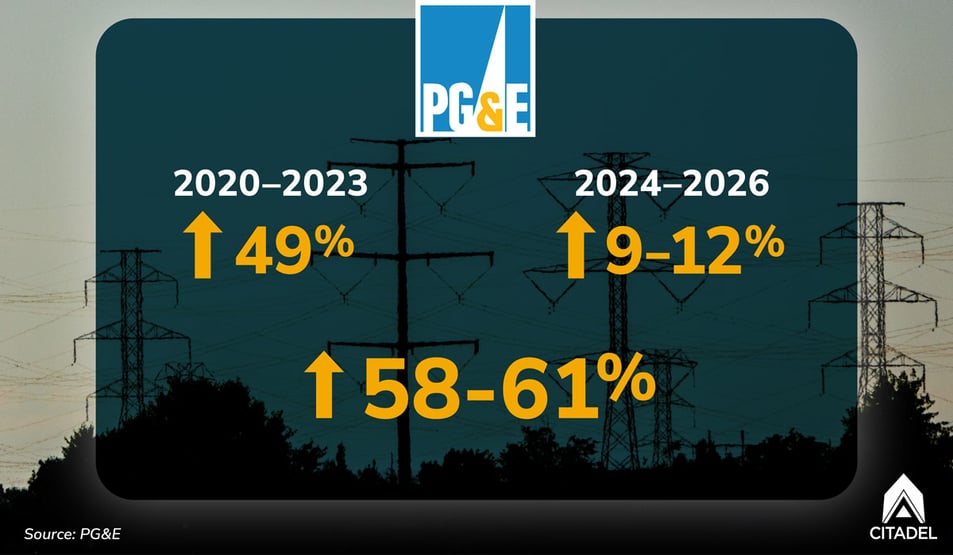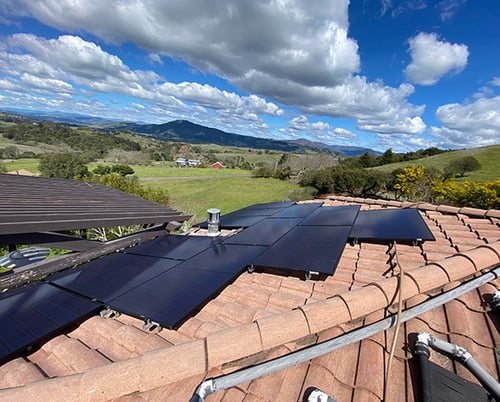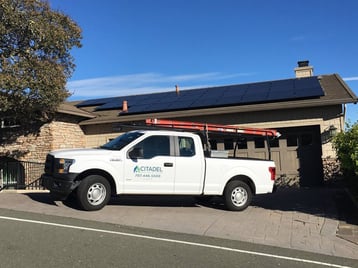If you’re a California homeowner shocked by your recent PG&E electricity bills, you’re not alone.
Nowadays, many homeowners struggle to pay their monthly PG&E bills. Even the best efforts to conserve energy are no match for PG&E’s soaring rates. Since 2020, the average residential rate by homeowners has increased by over 49%.
An 8% rate hike took effect in February of 2023. Understandably, homeowners are furious. It has become more and more clear that publicly-traded PG&E is concerned about shareholder interests—not ratepayer interests.
How and when did PG&E rates get so high?
PG&E does not seem eager to broadcast their rate increases. And deciphering a PG&E bill seems to require a PhD. However, we at Citadel believe that consumers deserve to be fully informed about their energy usage and costs.
In this blog post, we’ll explore:
- PG&E residential electricity rates since 2000
- A timeline of PG&E price increases
- How to reduce your monthly PG&E bill
- The benefits of a solar energy system
PG&E Electricity Rates Over the Years: A Timeline

The graph above shows the overall average rate California homeowners paid to PG&E per kilowatt-hour (kWh) each year beginning in 2000. Incredibly, the rate has exploded by more than 3x since the turn of the century (Source: PG&E, U.S. Energy Information Administration).
Is inflation to blame? Not exclusively. If PG&E had simply kept up with inflation, the rate would have less than doubled—instead, the $0.11 rate would be $0.20 in 2023.
And the recent upward trend is especially disturbing. The average residential rate paid (including all plans) has increased by over 49% since 2020.
Some of these rate hikes came at a time when California residents were facing near-record unemployment rates and inflation rates. It seems safe to say that ratepayer interests are not a primary concern of PG&E.

As if that weren’t enough…
The near future of PG&E pricing is also disconcerting—the corporation has asked for rate increases of 3-4% per year from 2024-2026. Only time will tell how high PG&E will raise their rates after 2026.
Can we escape these soaring prices, or are we doomed to be shaken down by PG&E?
Fortunately, you have options.
How to Reduce Your PG&E Electricity Bill
There are several ways to reduce your monthly PG&E bill, including lifestyle changes, enrolling in assistance programs, and more.
Here are some effective ways to save:
Reduce your energy consumption
One approach is to reduce the amount of electricity your household consumes. Try implementing the following:
- Unplug devices: Disconnect electronic devices and chargers when not in use. Even in standby mode, they can consume a significant amount of electricity.
- Use energy-efficient appliances: Opt for appliances with high energy efficiency ratings. These appliances use less electricity to perform the same tasks.
- Use LED lighting: Replace traditional incandescent bulbs with energy-efficient LED bulbs. They use considerably less electricity and last longer.
- Adjust your thermostat: Adjust your thermostat to a slightly higher temperature in the summer and a lower temperature in winter. Using a programmable thermostat can help regulate usage.
- Use natural light and ventilation: Make use of natural light during the day and try opening your blinds and/or windows to reduce the need for artificial lighting and air conditioning.
- Avoid charging your electric vehicle (EV) at home: If you own an EV, charge it at your work location or at a free public charging station.
Enroll in a discounting program
There are a variety of programs that help California residents reduce their electricity expenses. With the exception of the Medical Baseline Allowance, these programs are exclusively for low-income Californians.
These include:
- California Alternate Rates for Energy (CARE) Program—This program provides a discount to eligible low-income utility customers.
- Family Electric Rate Assistance (FERA) Program—Families of three or more whose income slightly exceeds the CARE program maximum may receive a utility discount through FERA.
- Medical Baseline Allowance—This program assists residential PG&E customers who depend on power for certain medical needs, irrespective of their income.
- Green Saver Program—Eligible low-income customers can save 20% on their PG&E bill by subscribing to 100% solar energy through this program.
- Low-Income Home Energy Assistance Program (LIHEAP)—This program provides up to $1,000 in financial assistance to eligible low-income households.
- Relief for Energy Assistance Through Community Help (REACH) Program—This program provides energy credits of up to $500 to eligible low-income households.
Switch to a Community Choice Aggregator (CCA)
Switching to a Community Choice Aggregator (CCA) or Community Choice Energy (CCE) program can help some Californians save money on their electricity bills. These locally controlled initiatives negotiate competitive electricity rates through bulk purchasing, which can lead to better pricing.
CCAs also offer rate stability, shielding customers from energy price fluctuations, and often prioritize renewable energy sources, which can contribute to long-term cost savings.
Many CCAs save their customers around 2 or 3% on their energy bills. However, actual savings depend on the specific CCE program and local energy market conditions.
Some examples of CCAs/CCEs in California include:
- Valley Clean Energy in Yolo County
- Pioneer Community Energy in Placer County
- CleanPowerSF in San Francisco County
- MCE in Contra Costa, Marin, Napa, and Solano
Install a Solar Energy System
Last but not least, you could enjoy significant savings on your energy bill by installing a solar energy system. This would entail working with a professional solar installer to add photovoltaic (solar) panels on your rooftop.
Your system would be connected to the electrical grid, allowing excess energy to either be sold back to the grid or stored in solar batteries for your later use.
The Benefits of a Solar Energy System
Homeowners enjoy a wide variety of great benefits when they install a solar energy system. Below are three of the most significant advantages.
1) Cost Savings
Solar installation requires a cost upfront, either in the form of a cash purchase or a loan. However, a well-designed solar energy system can help you drastically reduce your PG&E bill, leading to significant savings in the long run.
Plus, you may recoup all or most of your solar expenses when it comes time to sell your home. Multiple studies have shown that solar increases California property values significantly.
2) Independence from PG&E Rate Increases
When you offset much of your electricity needs to your solar panels, your family becomes less vulnerable to PG&E’s unrelenting price hikes. Because of this, you’ll enjoy more consistent overall energy costs.
For example, if you finance a solar energy system with a 10-year loan and it provides 80% of your total annual electricity consumption, the cost of that 80% remains the same throughout those 10 years. This cost is sheltered from inflation, PG&E’s whim, and global factors that can increase the cost of fossil fuels (which are used to produce most of the electricity in the U.S.).
While the remaining 20% is still subject to cost increases, you’ll still benefit from greater energy independence compared to pure reliance on PG&E.
3) Sustainability
Much of PG&E’s energy is produced by burning fossil fuels, which leads to carbon emissions and contributes to environmental degradation.
Solar power is a much cleaner alternative. It generates electricity without emitting greenhouse gases or other harmful pollutants. By capturing the sunlight hitting your roof every day, a solar system will significantly reduce your family’s carbon footprint.
Choosing the Right Solar Team
California legislators are constantly releasing new solar regulations. Amid all this change, it’s more important than ever to choose an informed solar team that will speak candidly with you about your options.
We at Citadel are happy to be your low-pressure guide, just as we have been to other Californians for over 30 years. We’ll help you determine the most beneficial solution for you, whether that includes solar panels, solar batteries, or even a new roof.
In Conclusion
California homeowners have been forced to grapple with high electricity prices from PG&E. This problem has only worsened in recent years as the corporation has increased prices to unprecedented heights. We hope that these statistics and cost-reduction strategies have been helpful.
If you’re considering taking the next step toward energy independence, download our free eBook about the must-knows before going solar:





